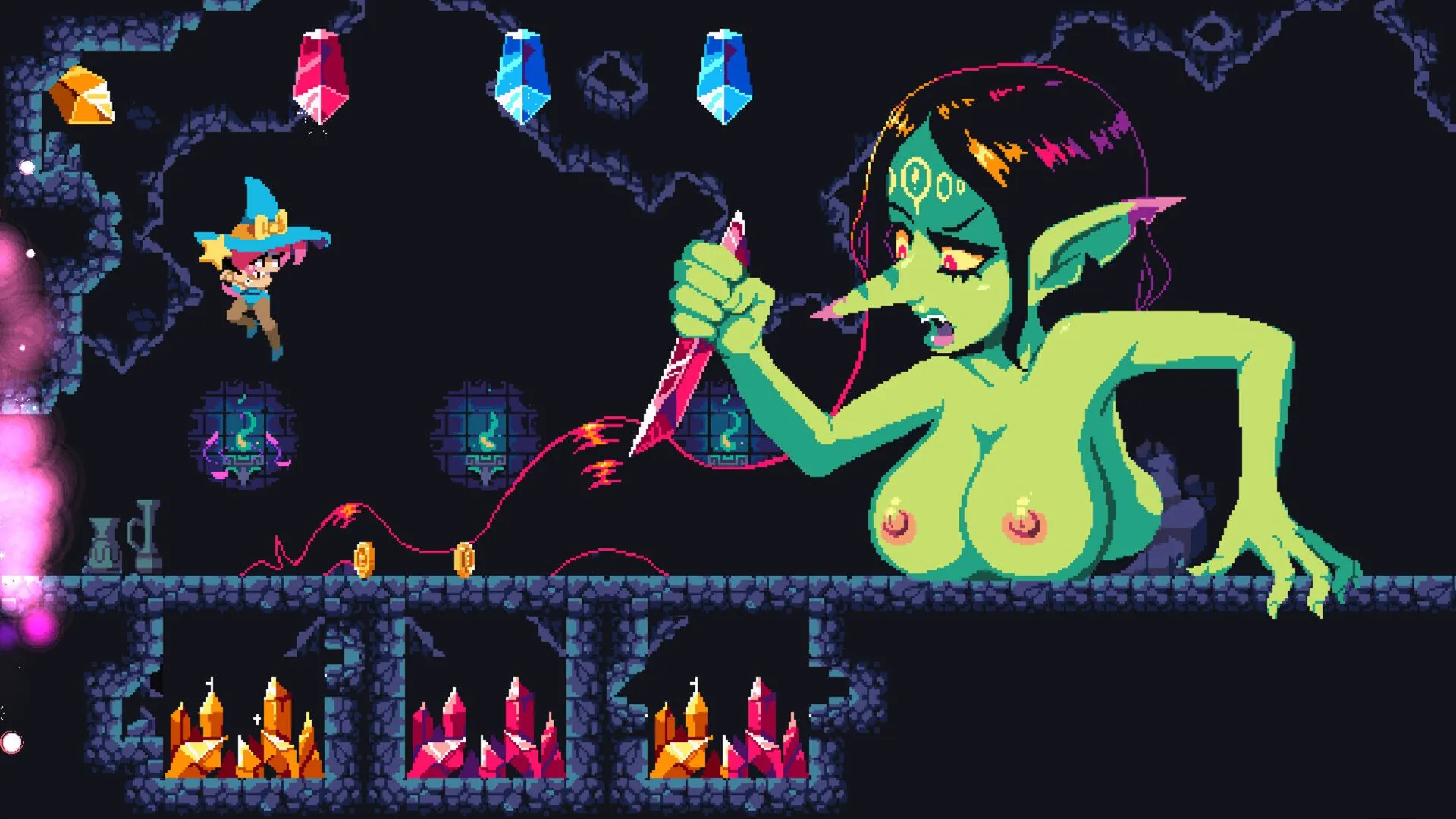
Long Story Short
Play Long Story Short
Long Story Short review
Explore the unique storytelling and gameplay of Long Story Short
Long Story Short is a captivating adult visual novel that blends humor, drama, and choice-driven storytelling into a unique experience. Centered on a young man’s journey beyond his computer screen, the game invites players to explore complex relationships and alternate timelines through interactive narrative choices. This article delves into what makes Long Story Short stand out, from its engaging plot to its innovative gameplay mechanics, providing insights and practical advice for players eager to immerse themselves in this intriguing world.
Unpacking the Story and Narrative Style of Long Story Short
Let me tell you about the first time I realized Long Story Short was something special. I was just clicking through, thinking it was another casual visual novel, when a dialogue option made me pause. The choice seemed trivial—how to describe a childhood memory—but something about the way it was framed felt heavy with consequence. I was right. That single decision subtly altered a relationship dynamic hours later. This is the magic of the Long Story Short game story; it makes you feel like every word matters. 🎮
This interactive storytelling game hooks you not with flashy action, but with the quiet power of human connection. If you’re fed up with linear tales that play out the same way every time, you’re in for a treat. The entire Long Story Short narrative is built on the foundation that your voice, your choices, are the engine of the plot.
What is the Core Plot of Long Story Short?
At its heart, the Long Story Short game story is a poignant and relatable journey about a young man navigating the complexities of life, love, and regret. 🧑💻
The protagonist (who you name and guide) finds himself in an anonymous online chat room, spilling his life story to a mysterious, empathetic girl. This isn’t a simple recap; it’s a real-time unburdening of his soul. As he types, you, the player, are thrust into the memories he’s describing. You don’t just hear about his past—you live it.
The brilliance of the Long Story Short narrative structure is this simultaneous dual existence. You’re actively participating in pivotal past events—navigating high school drama, dealing with family, and exploring first loves—while also witnessing the present-day reflection on those very events. This creates a powerful, introspective loop where your actions in the past directly color the tone and outcome of the conversation in the present.
My Tip: Pay close attention to how the protagonist describes events in the chat. His present-day perspective often reveals the emotional weight of your past decisions, adding a layer of depth I haven’t seen in many other games.
The Long Story Short plot choices you make are deceptively simple. They often revolve around:
* How honest to be with friends.
* How to handle confrontations.
* Which personal values to prioritize in a tough situation.
These aren’t just “good vs. evil” binaries. They are nuanced, often awkward, and always human decisions that shape who the protagonist becomes and how his story concludes. This focus on game story branching paths means your playthrough is authentically yours. ❤️
How Does the Game Use Alternate Timelines?
This is where Long Story Short truly separates itself from the pack. The game’s use of visual novel alternate timelines isn’t about sci-fi or parallel universes; it’s about the fragile, branching paths of our own lived experiences. ⏳
The core mechanic presents you with a “What if?” scenario after key moments. Once you reach a significant story branch and see one outcome, the game often allows you to rewind and explore the other path. You get to witness the immediate, and sometimes long-term, consequences of a different decision.
I remember one particular scene where I had to choose between supporting a friend or pursuing a romantic interest. My first choice led to a heartfelt moment of friendship. When I used the timeline feature to see the other option, I was shocked at how a single different line of dialogue created a cascade of changes, leading to a completely different emotional beat and relationship status later on.
This approach to visual novel alternate timelines is genius because it:
* Eliminates Regret: You can satisfy your curiosity without restarting the entire game.
* Highlights Consequence: It visually demonstrates how small choices create ripples.
* Enriches Replayability: It encourages you to explore every narrative crevice the developers crafted.
The Long Story Short plot choices are given immense weight because you are often shown the road not taken, making you more invested in the path you ultimately decide to call your “true” story.
Who Are the Key Characters and Their Roles?
The soul of any great story is its cast, and the Long Story Short characters are wonderfully crafted to feel like real people, not just archetypes. 👥
Your journey is defined by your interactions with them, and your relationships are the primary vehicle for the game’s branching paths. Each character serves a specific role in the protagonist’s life, representing different facets of his personality and challenges.
Here’s a breakdown of the key players you’ll meet:
| Character | Key Traits | Narrative Role |
|---|---|---|
| The Protagonist (You) | Reflective, uncertain, searching for meaning | Your avatar in the story. Your choices define his personality, memories, and ultimate fate. |
| Mysterious Girl (Chat Partner) | Perceptive, empathetic, a guarded listener | The catalyst for the entire story. She acts as a mirror, forcing the protagonist to confront his past and present self. |
| The Childhood Friend | Loyal, supportive, a grounding presence | Represents stability and history. This relationship is often a moral compass amidst other dramas. |
| The Love Interest(s) | Varied (can be charismatic, complex, or challenging) | Central to the romantic game story branching paths. Pursuing different characters unlocks vastly different story arcs and endings. |
| The Rival / Complication | Ambitious, sometimes antagonistic | Creates conflict and forces the protagonist to grow. How you handle this rivalry tests your character. |
What makes these Long Story Short characters so compelling is how your perception of them changes. The “rival” might reveal a hidden vulnerability. The “perfect” love interest might show a selfish side. The entire Long Story Short narrative is built on these dynamic, evolving relationships. Your Long Story Short plot choices in dialogue directly impact your affinity with each character, locking or unlocking entire scenes and, ultimately, determining which of the multiple endings you will experience.
This character-driven approach is what makes Long Story Short a masterclass in the interactive storytelling game genre. You aren’t just watching a story about relationships; you are actively building, breaking, and mending them with every decision you make. It’s a powerful reminder of the impact we have on each other’s lives. ✨
Long Story Short offers a rich, choice-driven narrative experience that combines humor, drama, and complex character interactions within a unique visual novel format. Its dual timeline storytelling and impactful player decisions create a compelling journey that resonates with players seeking depth and engagement. Whether you’re drawn to its narrative style or the dynamic relationships, Long Story Short invites you to explore a world where every choice shapes the story. Dive in and discover your own path through this memorable game.





